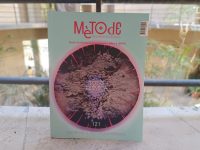Producing more food in a sustainable way is possible
Biotechnological and sustainable fertilisation as a way to face population growth
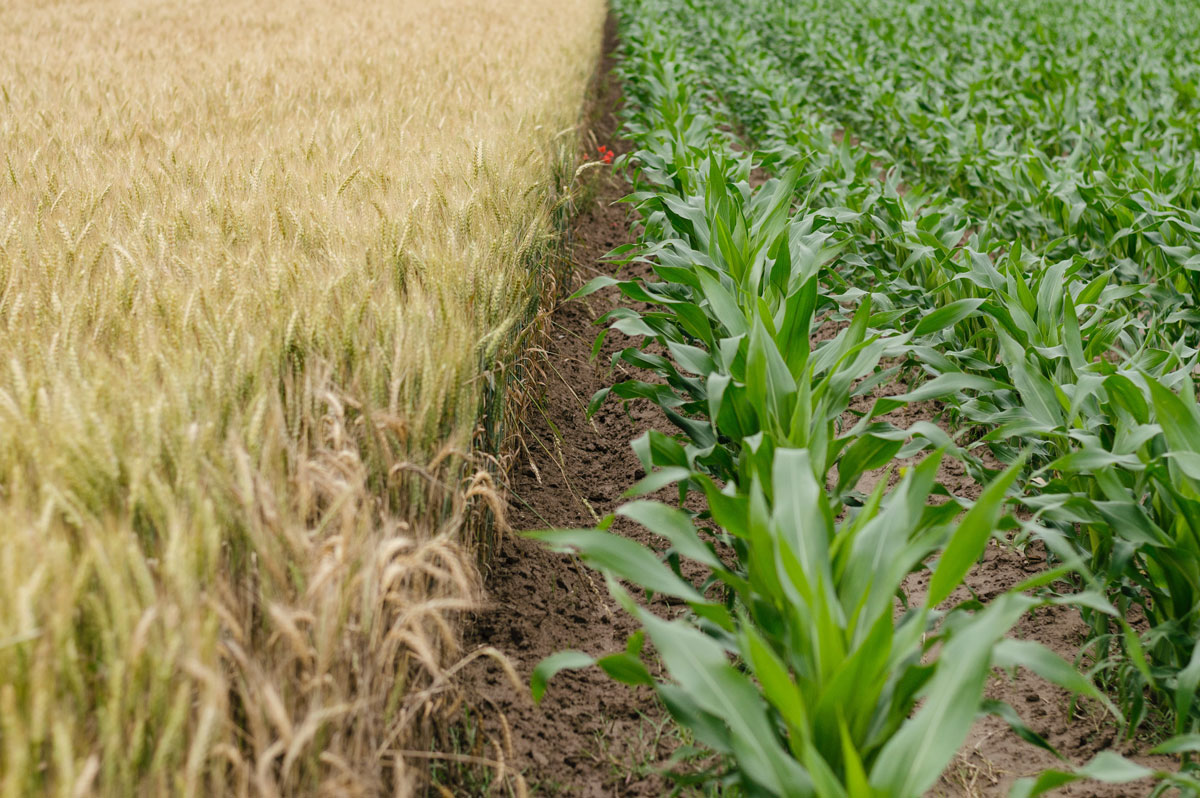
The dramatic increase in the world’s population expected in this century will force a proportional increase in agricultural production in order to ensure the food supply. However, society is now demanding new, more sustainable, and environmentally friendly production methods. In order to achieve this sustainable increase, new biotechnological tools such as gene editing or synthetic biology will have to be used, leveraging the knowledge generated by researchers over decades. The soil microbiome is emerging as a powerful biotechnological tool. The beneficial microorganisms harboured in soils promote plant growth by supplying nutrients and producing hormones and secondary metabolites. Thus, these microorganisms will likely be able to help increase agricultural production in a sustainable way.
Keywords: sustainable agriculture, root system, fertilisation, nitrogen, phosphate, microbiome.
Humanity and agriculture, a necessary co-evolution
More than 10,000 years ago, humans started to change their way of life and went from being mostly nomadic hunter-gatherers to sedentary farmers. The domestication and use of crop plants started at that point. The development of agriculture allowed prehistoric humans to stabilise their food supply, which enabled the creation of larger and larger human communities with significantly larger populations. Throughout history, this high population growth has also demanded an increase in agricultural production, resulting in humans largely depending on stable agriculture and livestock. Such dependence, translated as a «food security» need, is one of the most difficult challenges today’s society faces.
«In the coming years we will have to increase agricultural production in a more sustainable and environmentally friendly way»
The latest estimates indicate that the human population will grow to 11 billion by 2100 (FAO, 2017). This growth, together with the new needs of the populations in emerging countries, implies that agricultural production will likely increase by almost 50 % (Ray et al., 2013). The so-called «green revolution» occurred between the 1960s and 1980s. It involved the development and use of new varieties of genetically improved wheat, maize, and rice, as well as the use of new technologies, fertilisers, plant protection products, and irrigation systems. This «revolution» achieved an extraordinary increase in agricultural production. We currently face a similar threat, albeit in a different context. In the coming years we will have to increase agricultural production in a more sustainable and environmentally friendly way. Current agricultural production is highly dependent on the use of fertilisers, water, pesticides, and herbicides. However, we must implement new strategies to develop modern agriculture in a sustainable way both in economic and environmental terms; one that meets societal needs. This will require the commitment and coordination of politicians and social agents, as well as public and private research, development, and innovation to address important political and economic decisions that impact society (Figure 1).
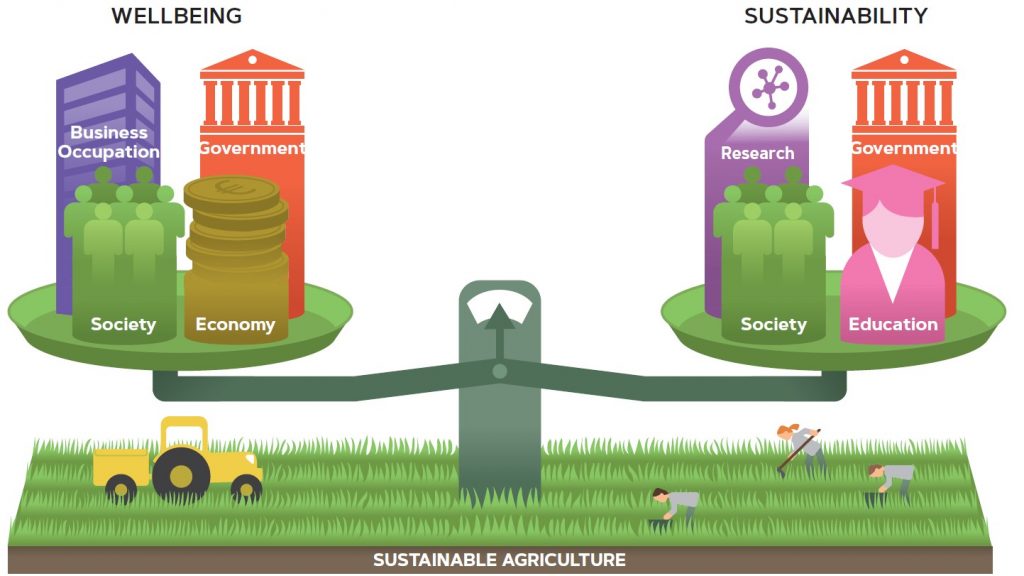
Figure 1. To develop sustainable and productive agriculture and ensure food stability, widespread international accords must be put in place in order to balance the needs and comfort of society with the sustainability of production systems. To this end, the commitment of different social and political parties, together with those involved in education and research, is essential. / Illustration: Xavi Sepúlveda
Sustainable production on a changing planet
Nitrogen and phosphate are two essential elements for plant growth and productivity. Generally speaking, agricultural soil contains low amounts of these macronutrients, so continued supply in the form of fertilisers is necessary. However, the crops’ absorption of these nutrients is low, meaning that farmers have traditionally tended to over fertilise, leading to serious environmental problems.
Nitrogen first started to be used as a nutrient in the form of organic fertiliser (guano) or nitrogenous minerals. In 1909, Haber-Bosch developed a chemical process that allowed atmospheric nitrogen to be fixed, thus making it an unlimited element, albeit one with a high energy cost. In fact, more than 450 million tons/year nitrogen are generated through this process for their use in fertilisers.
«Nitrogen and phosphate are two essential elements for plant growth and productivity»
Some bacteria found in nature can fix nitrogen and establish symbiotic relationships with certain legume species. In this symbiosis, the bacteria provide plants with the nitrogen they need in exchange for carbohydrates (Mus et al., 2016). However, the most important species for global food supply (rice, maize, and wheat) cannot create these symbiotic relationships, so their productivity depends on supplied fertilisers. In recent years, several research teams have been carrying out an ambitious programme to create cereals capable of autonomously fixing nitrogen or establishing a symbiosis with nitrogen-fixing microorganisms (Stokstad, 2016). One of these research teams is trying to introduce the genes that encode nitrogenase – a multi-enzyme system responsible for fixing atmospheric nitrogen – into the cereal genome (López-Torrejón et al., 2016). This is a major challenge because the enzymatic assembly of nitrogenase is complex and quickly degrades in the presence of oxygen, so the active form acts only in anaerobic cellular environments. This project is complicated and very risky, but its success would certainly have an unprecedented social and scientific impact.
Other research teams are working on «rolling cereals back in evolutionary terms», i.e., they are trying to understand when, during evolution, cereals lost their ability to establish symbiotic relationships, given the fact that most of the plant genes involved in this process are still present in their genome (Stokstad, 2016). This project could be deemed successful if it manages to modify cereals to permit the invasion of bacteria while also providing them nutrients (carbohydrates) and leghaemoglobin – a protein that carries oxygen to protect nitrogenase activity – while microorganisms provide nitrogen to the plants.
While these long-term and risky projects advance, others are trying to identify and improve bacteria that directly fix nitrogen in the soil, which can also positively affect crops. Recently, 52 genes involved in nitrogen fixation have been introduced into a non-fixative bacterium. This modified bacterium can fix atmospheric nitrogen to be used by maize or wheat roots (Setten et al., 2013). Results from this study indicate that the use of biotechnology and synthetic biology will be very useful for achieving the desired increase in production in a more sustainable way.
The phosphate paradox
Phosphate is an essential macronutrient required by organisms; it is a structural molecule. One peculiarity is that phosphate cannot be replaced by a different element, so its bioavailability is essential for life (Goldford et al., 2017). In fact, several decades ago Isaac Asimov described it as «life’s bottleneck». Similarly, the former president of the USA, Franklin D. Roosevelt highlighted the political and economic importance of this element and stressed the need to implement a safe supply policy for this mineral to ensure agricultural production (Roosevelt, 1938).
«New strategies are being developed to improve fertilisation, including, among others, precision agriculture, controlled fertilisation, and biostimulants»
The phosphate used in fertilisers is mostly extracted from phosphorite. Currently, the largest reserves of this mineral are concentrated in a few countries: China, Morocco, the USA, and Russia. The high demand for fertilisers is severely reducing the economically exploitable phosphate reserves, and several estimations indicate that this natural resource could limit agriculture in 100–150 years’ time. Scarcity would increase the price of fertilisers and create a food security problem. In response to this situation, different parties (governments, society, researchers, educators, etc.) have launched initiatives to use phosphate reserves in a more rational and sustainable way, with recycling improvements and a reduction of the use of phosphate compounds and in fertilisers, and generating plants that absorb or use phosphate more efficiently.
«Some bacteria found in nature can fix nitrogen and establish symbiotic relationships with certain legume species»
Within the field of fertilisers, the main problem is that plants absorb only a small percentage of the nutrients provided to them. In the most developed countries, fertiliser is traditionally overused at different times of the year to ensure maximum agricultural production. Plants assimilate nutrients gradually throughout their growth cycles. Therefore, a high percentage of the nutrients deposited in the soil are lost due to rainwater or irrigational leaching, reaching and contaminating groundwaters. They are also lost by volatilisation in the case of nitrogen or by the formation of low solubility phosphate salts in the case of phosphorous (SARE, 2019). Thus, new strategies are being developed to improve fertilisation, including, among others, precision agriculture, controlled fertilisation, and biostimulants.
On the one hand, precision agriculture uses «precise» knowledge of the agricultural environment, including soil type, pH, water supply, nutrient needs, and temperature analysis. Thus, several sensors are being developed to measure these parameters and send real-time data to farmers. Likewise, precision agriculture will allow the development of more efficient and productive robotised fields (Van Hooijdink, 2018).
«The high demand for fertilisers is severely reducing economically exploitable phosphate reserves»
On the other hand, new fertiliser formulations developed in recent years contain nitrification process inhibitors, or stabilisers to prevent the volatilisation of the nitrogen. Slow or controlled-release fertilisers have also been developed. In the latter case, increased soil temperatures, which correlate with higher rate of plant growth and higher nutritional needs, trigger the release of nutrients. This technology is based on encapsulating nutrients in a porous polymer whose pore opening size depends on temperature, thus allowing for the gradual release of its contents.
Lastly, biostimulants (or plant strengtheners), produced either by plants themselves, microbes, or chemically synthesised, are used to enhance plant growth and productivity. In most cases, the functioning of these compounds at the molecular level is unknown. Today, thanks to the advance in (and price reduction of) «-omics» techniques, the functioning of these biostimulants and their recognition by plants are beginning to be understood. These molecular studies will help us to understand, at a global level, the impact of adding biostimulants to plants in terms of their nutritional value and the accumulation of desired and undesired metabolites, etc.
Sustainable agriculture requires biotechnological solutions
The use of knowledge and biotechnology will be key in the coming years to implement and develop productive and sustainable agriculture. To be able to achieve these goals, we will need to identify and improve both our crops and the microorganisms that interact with them.
New natural varieties versus gene editing
Crop improvement was historically based on the identification of new phenotypes with improved characteristics (productivity and resistance to biotic and abiotic stress, etc.). These changes are usually generated by the spontaneous mutations that occur in some individuals (natural variability) or by mutagenesis. These mutants must be crossbred with «elite» crop varieties to incorporate the desired characteristics into them. However, this genetic improvement process is slow and tedious. Nonetheless, we now have biotechnological tools such as genetically modified organisms (GMOs) and gene editing techniques which we can use to reduce this time down to a matter of years.
The recent development of gene editing techniques, i.e., the targeted modification of an organism’s DNA, has opened a door to many possibilities (Gao, 2018). However, in a recent and controversial sentence, the Court of Justice of the European Union found that organisms created using gene editing must be considered genetically-modified organisms, because they undergo a process of temporary transgenesis. Gene-editing tools allow the genomes of plants to be modified quickly and specifically, generating safe varieties with phenotype improvements. These plants could then be used to increase production while decreasing the use of fertilisers and water, increasing crop resistance to drought, frost, pathogens, etc. In short, they could help provide a quick and safe solution to the great challenges posed by sustainability and population growth.
Microorganisms
The soil is an inert entity, yet it can house a large quantity and diversity of life. Soil microorganisms continuously interact with plants, generating a living and dynamic environment called a rhizosphere. This space hosts rich microorganism populations adapted to the soil’s physical and chemical characteristics and the type of plants it contains, resulting in the co-evolution of all three components. Beneficial soil microorganisms have a high impact on agriculture because they largely determine its structure, plant nutrition, and production of substances. This promotes plant growth and the monitoring and control of plant pathogens, preventing the onset of diseases (Figure 2) (Singh & Trivedi, 2017).
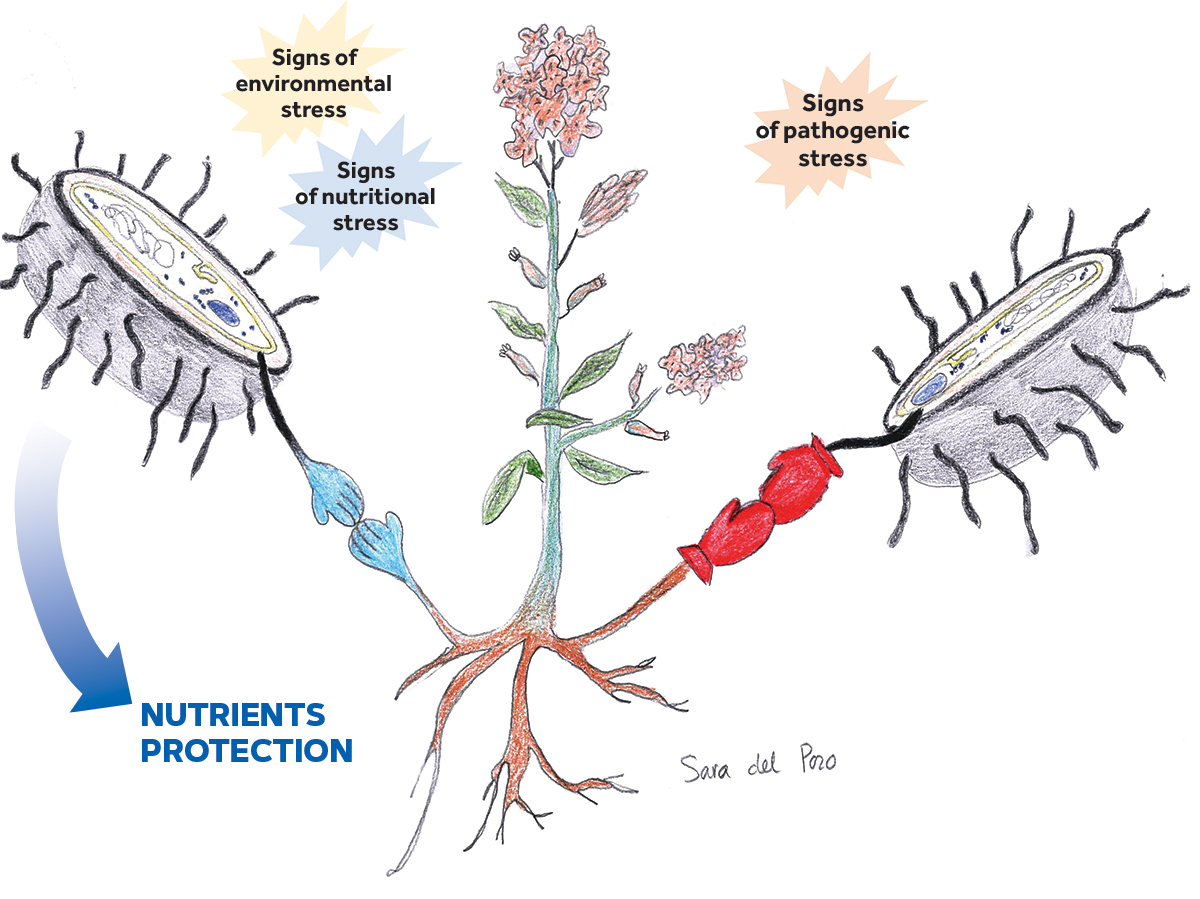
Figure 2. The picture shows a beneficial microbiome (left) versus a pathogenic microbiome (right). Bacteria and fungi have traditionally been considered pathogenic microorganisms that can harm plants. However, it is becoming more and more evident that the soil microbiome contains many beneficial microorganisms that can facilitate plants’ acquisition of nutrients and protect them from other pathogenic microorganisms. / Illustration: Sara del Pozo
During the plant-microorganism interaction process the roots exude carbon-rich compounds – amounting to 15 %–30 % of the energy photosynthesised by the plant – which are used by the microorganisms as a source of carbon for their own growth. Thus, the plants pay a high price for the minerals that microorganisms provide, although the final balance compensates for it. In addition to nitrogen-fixing microorganisms, other microorganisms are capable of mobilising nutrients from organic matter or insoluble salts in the soil, including calcium- or aluminium-phosphates. Still other microorganisms degrade complex organic molecules to form an organic fertiliser known as «humus», which provides plants with growth nutrients and biostimulants. Finally, at the end of a plants’ life cycle, once they die or are harvested, the roots that remain in the soil accumulate as organic matter and are processed by microorganisms, thus maintaining the rhizosphere and preventing soil degradation and erosion, especially in intensive farming areas.
«Beneficial soil microorganisms have a high impact on agriculture»
The rhizosphere hosts a large number of microorganisms (millions of bacteria with thousands of species in each gram of soil), although only a few species seem to predominate around the world (Delgado-Baquerizo et al., 2018). However, some less common species may be essential in the adaption of plants to extreme conditions. Microorganisms have recently been identified in the Danakil Depression (Ethiopia), one of the most inhospitable environments on the planet, whose soil is thought to be akin to that of Mars (Gómez et al., 2019). Indeed, if these identified microorganisms favour plant growth, they could be used to develop «extraplanetary agriculture».
As mentioned above, phosphate scarcity will be one of the limiting factors for future agricultural production. Therefore, there is now a strong interest in the identification of microorganisms that can increase phosphate bioavailability in the soil and facilitate its absorption by plants. It is estimated that a 2.5 % yearly increase in phosphate fertilisers will be required to meet our future food needs. Nevertheless, these estimates do not consider the residual phosphate present in the soil, deposited as salts or organic matter with low bioavailability (harvested plant roots). This stored phosphate could re-enter plants’ food chains thanks to the action of microorganisms and could help to develop more sustainable fertilisation processes. As an example, a post-harvest wheat field deposits approximately 5 tonnes of roots per hectare which, thanks to the action of microorganisms, could transform into approximately 350 kg of humus – a very good complement to the fertiliser input.
«The use of knowledge and biotechnology will be key to implement and develop productive and sustainable agriculture»
The phosphate paradox is especially worrisome in the case of tropical agricultural soil, because, despite being good for agriculture, these soils are often poor in phosphate. In addition, because of their physical and chemical characteristics, these soils sequester large amounts of phosphates, which makes the excess phosphate from fertilisation unavailable in successive years (Roy et al., 2016). Therefore, the identification of microorganisms capable of mobilising phosphate in these soils will be essential to help develop an efficient agricultural model in these areas and for preventing mass deforestation. In this sense, different bacterial isolates have been identified that can promote plant growth and solubilise immobilised phosphate (Walitang et al., 2017). This work opens up a new line of research that could be vital to achieving more sustainable and circular agriculture.
Plant roots are also colonised by over 6,000 fungal species which form ectomycorrhiza or intracellular mycorrhizae. Although the number of plant species forming mycorrhizae is very high, some plants, such as those of the Brassica genus (rapeseed, cauliflower, or the model plant Arabidopsis thaliana) do not. However, a team has recently proved the interaction between a fungus, Colletotrichum tofieldiae, and Arabidopsis plants. This interaction favoured their growth and fitness in phosphate deficiency conditions (Hiruma et al., 2016). This discovery is important because it shows that , thanks to the use of new molecular techniques, it is possible to find a broad range of interactions within natural populations that had previously been overlooked.
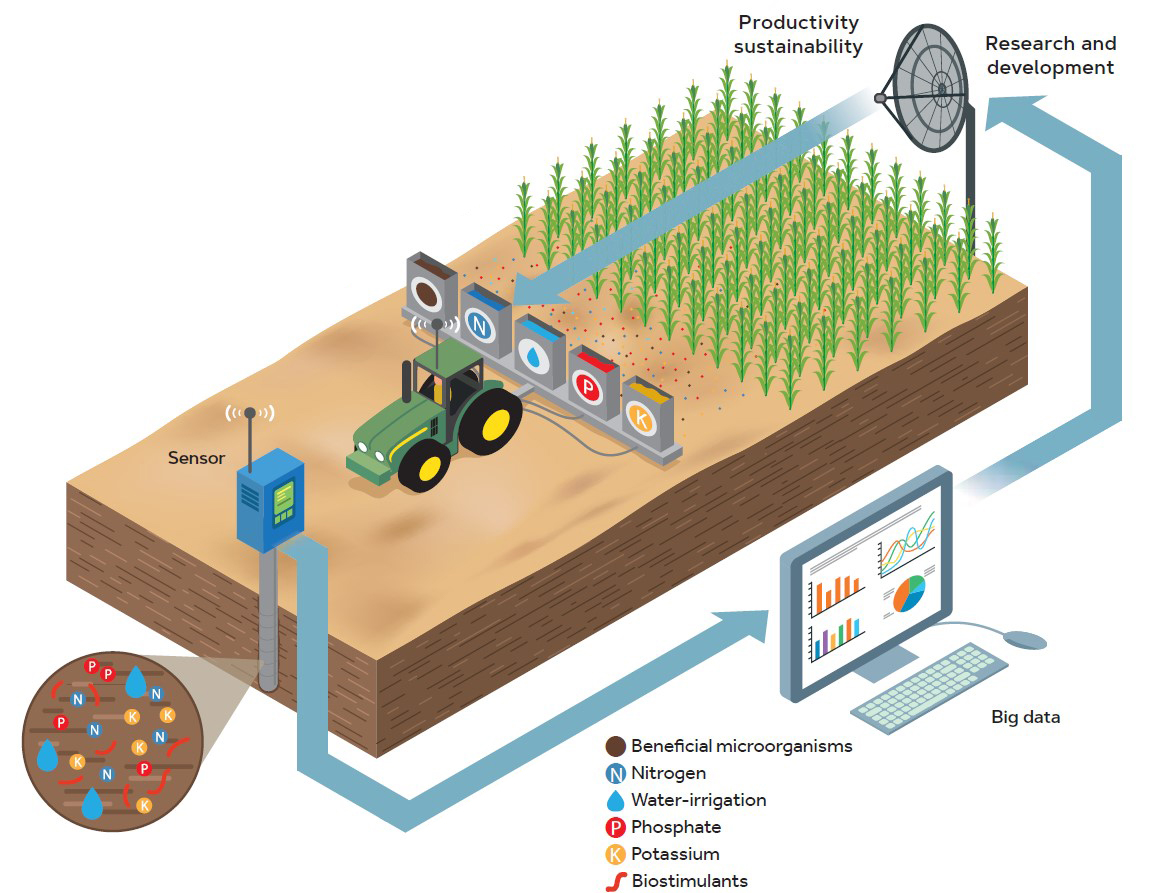
Figure 3. Recent technological advances in agriculture are opening up new avenues of research for developing new fertilisation programmes that are more sustainable and effective and that can regenerate degraded and unproductive soils. Although it is too soon to confirm it, in the future we might have «precision and on-demand agriculture» which combines improved crops, environmental sensors, and specific crop-soil-microorganism fertilisers – to improve productivity at a lower economic and environmental cost and in a more long-term and sustainable way. The knowledge is already here; now it is the time to apply it correctly. / Illustration by Xavi Sepúlveda
Furthermore, microorganisms are now being exploited by biotechnological companies to strengthen plants in order to increase the productivity of certain crops. Nonetheless, several factors must be considered before introducing products that include microorganisms onto the market such as, for example, how these isolates interact with the microorganism populations already in the target soil and how they could affect soil structure. On a different note, intensifying research efforts will be essential to identify which pathways/genes are modified by the introduction of these microorganisms and which could be candidates for classical improvement programmes or for genetic modification. Such efforts could lead us to obtain more efficient crop-isolate combinations, thus improving agricultural production.
Conclusions
It is difficult to predict what our lifestyle and quality of life might be like in a hundred years’ time. However, we are already aware of the challenges we will face in the coming decades. One of them is food security, which is closely linked to population growth and is conditioned by climate change, water scarcity, and fertiliser use. Together, these factors point towards serious future difficulties in the provision of safe and affordable food to the world’s population. No one has a definitive solution to how should we deal with these problems. However, science has generated knowledge that we will be able to use to create biotechnological solutions for the development of sustainable and precision agriculture, to provide quality and sufficient food (Figure 3). The knowledge and tools are already available. Now the moment has come for us to apply them in order to develop the new agricultural production strategies that will be vital to achieving the 17 sustainable development goals (SDGs) established by the UN for the coming years.
Acknowledgements: This work is directly related to the project BIO2017-82209-R Rot-Phos: «Root responses to phosphate starvation: New approaches to improve plant growth with reduced fertilization». I would also like to thank Chema Lora and Olga Navarro for their help in editing the text and Sara del Pozo for the illustration.
References
Delgado-Baquerizo, M., Oliverio, A. M., Brewer, T. E., Benavent-González, A., Eldridge, D. J., Bardgett, R. D., Maestre, F. T., Singh, B. K., & Fierer, N. (2018). A global atlas of the dominant bacteria found in soil. Science, 359(6373), 320–325. http://doi.org/10.1126/science.aap9516
FAO. (2017). El futuro de la alimentación y la agricultura: Tendencias alimentación y desafíos. Food and Agriculture Organitzation of the United Nations. http://www.fao.org/3/a-i6881s.pdf
Gao, C. (2018). The future of CRISPR technologies in agriculture. Nature Reviews Molecular Cell Biology, 19, 275–276. http://doi.org/10.1038/nrm.2018.2
Goldford, J. E., Hartman, H., Smith, T. F., & Segre, D. (2017). Remnants of an ancient metabolism without phosphate. Cell, 168(6), 953–955. http://doi.org/10.1016/j.cell.2017.02.001
Gómez, F., Cavalazzi, B., Rodríguez, N., Amils, R., Ori, G. G., Olsson-Francis, K., Escudero, C., Martínez, J. M., & Miruts, H. (2019). Ultra-small microorganisms in the polyextreme conditions of the Dallol volcano, Northern Afar, Ethiopia. Scientific Reports, 9(1), 7907. http://doi.org/10.1038/s41598-019-44440-8
Hiruma, K., Gerlach, N., Sacristán, S., Nakano, R. T., Hacquard, S., Kracher, B., Neumann, U., Ramírez, D., Bucher, M., O’Connell, R. J., & Schulze-Lefert, P. (2016). Root endophyte Colletotrichum tofieldiae confers plant fitness benefits that are phosphate status dependent. Cell, 165(2), 464–474. http://doi.org/10.1016/j.cell.2016.02.028
López-Torrejón, G., Jiménez-Vicente, E., Buesa, J. M., Hernandez, J. A., Verma, H. K., & Rubio, L. M. (2016). Expression of a functional oxygen-labile nitrogenase component in the mitochondrial matrix of aerobically grown yeast. Nature Communications, 7, 11426. http://doi.org/10.1038/ncomms11426
Mus, F., Crook, M. B., Garcia, K., Garcia Costas, A., Geddes, B. A., Kouri, E. D., Paramasivan, P., Ryu, M.-H., Oldroyd, G. E. D., Poole, P. S., Udvardi, M. K., Voigt, C. A., Ané, J.-M., & Peters, J. W. (2016). Symbiotic nitrogen fixation and the challenges to its extension to nonlegumes. Applied and Environmental Microbiology, 82(13), 3698–3710. http://doi.org/10.1128/AEM.01055-16
Ray, D. K., Mueller, N. D., West, P. C., & Foley, J. A. (2013). Yield trends are insufficient to double global crop production by 2050. PLOS ONE, 8(6), e66428. http://doi.org/10.1371/journal.pone.0066428
Roosevelt, F. D. (1938, May 20). Message to congress on phosphates for soil fertility. Published online by G. Peters & J. T. Woolley. The American Presidency Project; 1999-2011. UC Santa Barbara. https://www.presidency.ucsb.edu/node/208838
Roy, E. D., Richards, P. D., Martinelli, L. A., Coletta, L. D., Lins, S. R. M., Vazquez, F. F., Willig, E., Spera, S. A., VanWey, L. K., & Porder, S. (2016). The phosphorus cost of agricultural intensification in the tropics. Nature Plants, 2, 16043. http://doi.org/10.1038/nplants.2016.43
SARE. (2019). Management of nitrogen and phosphorus. https://www.sare.org/Learning-Center/Books/Building-Soils-for-Better-Crops-3rd-Edition/Text-Version/Management-of-Nitrogen-and-Phosphorus
Setten, L., Soto, G., Mozzicafreddo, M., Fox, A. R., Lisi, C., Cuccioloni, M., Angeletti, M., Pagano, E., Díaz-Paleo, A., & Ayub, N. D. (2013). Engineering Pseudomonas protegens Pf-5 for nitrogen fixation and its application to improve plant growth under nitrogen-deficient conditions. PLOS ONE, 8(5), e63666. http://doi.org/10.1371/journal.pone.0063666
Singh, B. K., & Trivedi, P. (2017). Microbiome and the future for food and nutrient security. Microbial Biotechnology, 10(1), 50–53. http://doi.org/10.1111/1751-7915.12592
Stokstad, E. (2016). The nitrogen fix. Science, 353(6305), 1225–1227. http://doi.org/10.1126/science.353.6305.1225
Van Hooijdink, R. (2018, December 20). 4 ways robotics will affect agriculture in 2019. Robotics Business Review. https://www.roboticsbusinessreview.com/agriculture/4-ways-robotics-change-agriculture-in-2019/
Walitang, D. I., Kim, K., Madhaiyan, M., Kim, Y. K., Kang, Y., & Sa, T. (2017). Characterizing endophytic competence and plant growth promotion of bacterial endophytes inhabiting the seed endosphere of rice. BMC Microbiology, 17(1), 209–209. http://doi.org/10.1186/s12866-017-1117-0


